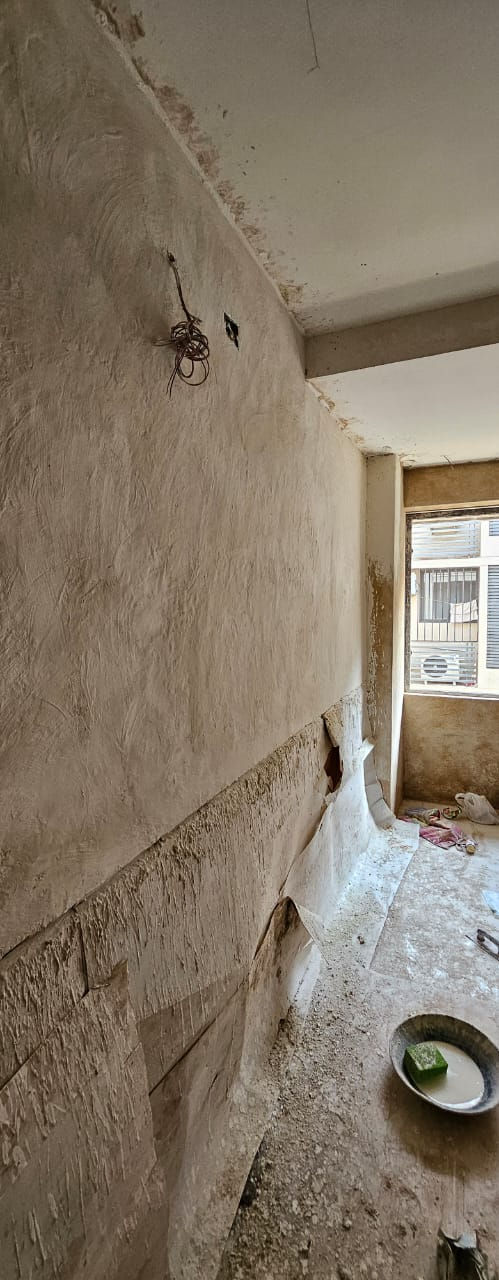Through the Hands of a Builder: Why Workers Prefer Sustainable Materials
- indrsarv
- Feb 24
- 4 min read
Updated: Apr 25
When we think of sustainable architecture, we often focus on design, energy efficiency, and environmental impact. But what about the people who bring these buildings to life? The masons, carpenters, and laborers who shape our homes and offices? Their perspective on materials matters just as much.
The Shift Towards Sustainable Materials
Traditionally, construction has relied heavily on concrete, steel, and synthetic materials. While these are strong, they come with high energy costs, health hazards, and difficult working conditions. Today, more workers prefer natural and sustainable materials like bamboo, stone, timber, lime, mud, and rammed earth—and for good reason.

Why Workers Prefer Sustainable Building Materials
Comfort & Workability
Many traditional materials generate heat and dust, making it exhausting to work with, especially in hot climates like Gujarat. Sustainable materials, however, are often cooler to the touch, softer on the hands, and easier to shape.
“Working with lime plaster is far more comfortable than cement. It’s smooth, doesn’t burn our hands, and allows for easy finishing,” Prakash a skilled worker from Ahmedabad. Prakash installed the base layer for the mud plaster.
🔎 Fact Check: According to a study in the International Journal of Occupational Medicine and Environmental Health, prolonged exposure to cement dust can cause skin burns, dermatitis, and respiratory irritation, while natural materials like lime and mud are less abrasive and easier on the skin.

Additionally, studies conducted by the National Institute for Occupational Safety and Health (NIOSH) show that exposure to fine particulate matter from concrete and synthetic materials increases the risk of pulmonary fibrosis and chronic obstructive pulmonary disease (COPD). Workers who shift to sustainable materials often report better lung function and fewer breathing issues.
2. Health & Safety Benefits
Cement and synthetic materials release harmful dust and chemicals that can cause respiratory problems and skin irritation. In contrast, lime, mud, and bamboo are non-toxic, dust-free, and even improve indoor air quality.
“When I work with mud and lime, I don’t need to wear heavy masks or worry about my health. It feels natural,” shares Imran specializing in earth construction.
🔎 Medical Insight: Studies published in the Journal of Occupational and Environmental Hygiene show that workers exposed to cement dust for long periods have an increased risk of developing chronic bronchitis and reduced lung function. Natural materials reduce these risks significantly.
Moreover, research from the World Health Organization (WHO) highlights that poor air quality from cement-based construction contributes to asthma and cardiovascular diseases, particularly in workers exposed to such environments daily. By opting for breathable, natural materials workers significantly reduce their risk of long-term health complications.
3. Skill Development & Pride
Sustainable construction revives traditional craftsmanship, allowing workers to take pride in their skills. Techniques like rammed earth walls, lime plastering, and stone masonry require artistry and experience—giving workers a chance to become master craftsmen instead of just labourers.
“My father was a stone mason, and now I am continuing his craft. Stonework is not just work—it’s art,” Kartar Singh, a craftsman from Rajasthan.
🔎Historical Perspective: Research from UNESCO suggests that traditional building methods using mud and lime have stood the test of time for centuries, proving their durability while preserving artisanal craftsmanship.
In a study by the International Labour Organization (ILO), it was found that training workers in sustainable construction not only preserves cultural heritage but also improves job satisfaction and work longevity. Workers with specialized skills in bamboo construction, lime plastering, or mud-brick making often earn higher wages than unskilled laborers working with concrete.
4. Economic & Employment Benefits
Using local materials reduces transportation costs and creates more jobs for local communities. Unlike mass-produced concrete, sustainable materials require handwork and expertise, increasing demand for skilled workers.
“When we build with mud and lime, we hire more local artisans instead of relying on machines. It keeps more of us employed,” says a site supervisor from Gandhinagar.

🔎 Economic Impact: According to a study in The International Journal of Sustainable Built Environment, integrating local materials into construction reduces costs by 20-30% while generating more employment opportunities in rural communities.
Further, a report by the United Nations Environment Programme (UNEP) highlights that sustainable building projects create up to 50% more jobs compared to conventional construction, mainly because of their reliance on local expertise and labor-intensive methods.
Challenges & The Way Forward
Despite these benefits, challenges remain—access to training, market demand, and perception issues. Many workers believe sustainable materials are the future, but they need more training programs, fair wages, and client awareness to make it widespread.
🔎 Policy Recommendations:
Government Incentives: Governments can provide tax benefits and subsidies to builders using sustainable materials, making it more viable for workers.
Skill Development Programs: Investing in vocational training centres focused on sustainable construction will ensure workers transition smoothly to these materials.
Client Awareness Campaigns: Educating home buyers and developers on the long-term benefits of sustainable materials can increase demand, ensuring more work opportunities for skilled labourers.
Building a Future That Works for Workers

Sustainability isn’t just about the planet; it’s about the people who build it. As architects, designers, and clients, we need to listen to the voices of workers who craft our spaces. Their insights and expertise can shape a more ethical, efficient, and human-centred approach to construction.
What are your thoughts?
Have you seen workers embracing sustainable materials in your projects? Let’s discuss it!

Comments